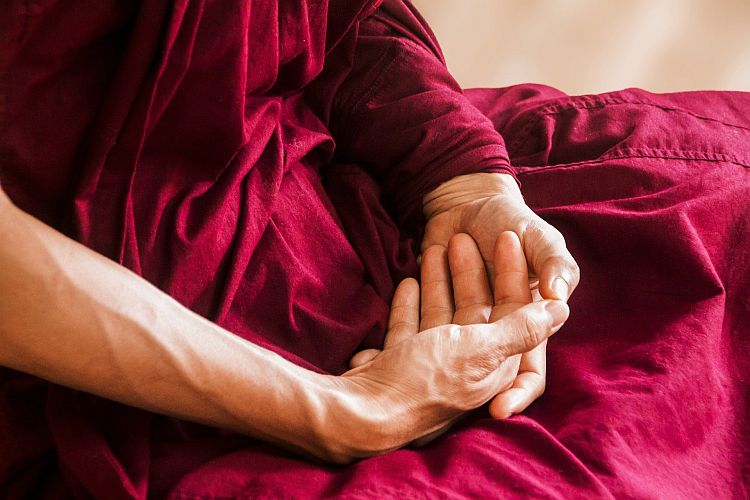Views: 30

Just sitting…
When I first got into meditation, it was back in the late 60s and there was little or no instruction available. I attended my first formal Zazen session at a small gathering of middle class Buddhists literally ‘just up the road’ from my family home.
I visited Throssel Hole Priory where I eventually took Jukai and also attended formal training sessions with Kalu Rimpoche at Samye Ling Monastic Centre in Eskdalemuir. I was fully intending to take ordination as a novice at that point, but life got in the way and I married had kids etc, etc.
Although the approaches were different, they all had the same effect (if you can call it that). They taught me awareness and concentration that have proved invaluable in my day-to-day life.
There are many approaches to meditation and we have explored a couple of those at our regular training sessions. We are currently working with concentration on the breath and of course, my favourite ‘just sitting’.
Just sitting, or Zazen as I know it, was taught to me at Throssel hole Priory, near Hexham by Jiyu Kennet roshi, and is known as Shi Kan Ta Za in the Soto Zen tradition (more about that later).
Here is the method in the way that I was taught and echoes the words of Soto Zen Teacher Dogen Zenji in the 13th century
1) Find a quiet spot and cast aside all involvements and cease the 10,000 things.
2) Early morning practice is good
3) Sit on a zafu (cushion)
4) Keep spine straight
5) Eyes open “neither wide open, nor half-closed”
Remember, Zazen is not a spiritual practice. It is the effort of mind and body.
The 4 points of Zazen
The first thing I asked was what should I be thinking about.
“Good is not considered, bad is not considered. It is beyond mind, will, or consciousness and beyond mindfulness, thought or reflection”
- Hi Shi Ryo – Non thinking.
- Sho Shin Tan Za – Sitting up, right making the body right.
- Shin Jin Datsu Raku – Dropping off body and mind.
- Shi Kan Ta Za – Just sitting.
The word Hi Shi Ryo means non thinking.
“What the hell is that?” I asked the question and was told just “think non-thinking”
In other words, start paying attention to your thought processes. The processes and not the actual thoughts. Thoughts don’t just go on continually and there are little spaces between them. Observe the gaps.
You could say that there are two types of thoughts:
The trivial thoughts that pop up and disappear and the complex thoughts that grab out attention and take us along for a ride.
So…
To practice thinking not thinking, ignore the first lot and learn not to foment the second lot. Just look at the natural spaces between all of them .
Dogen spent a great deal of time addressing the physicality of Zazen.
Sho Shin Tan Za means right posture and regulated sitting. Posture is a great measure of how well your meditation is going, so pay attention to how you are sitting and watch what happens.
Are you relaxed or tense?
So sit up and not down!
Shin Jin Datsu Raku, or the dropping off of body and mind.
The famous Soto teacher Gudo Nishijima calls it the balance of the autonomic nervous system, or the balance between thought and feeling.
In Buddhism we make no distinction between the mental and the physical. Both are connected.
Finally, we come to Shi Kan Ta Za, or just sitting. Mind you, that doesn’t mean to just sit around aimlessly.
Shi kan means earnestly, or intently, and the first character in the second word Ta means hit or strike.
The final character Za means sit.
The image when I first heard this description evoked the hitting of the cushion as you sat down. Really meaning it with pure intention.
With action!
No bells, no whistles or mystical trances.
No search for ‘enlightenment’ or daft attempts at self-improvement .
Zazen is simply sitting there…
So… Off you go!
Don’t forget to join me every Tuesday evening at 6.00 PM (UK time) for our online meditation and discussion session.
Click here to register for the Higherway Code Meditation Group
